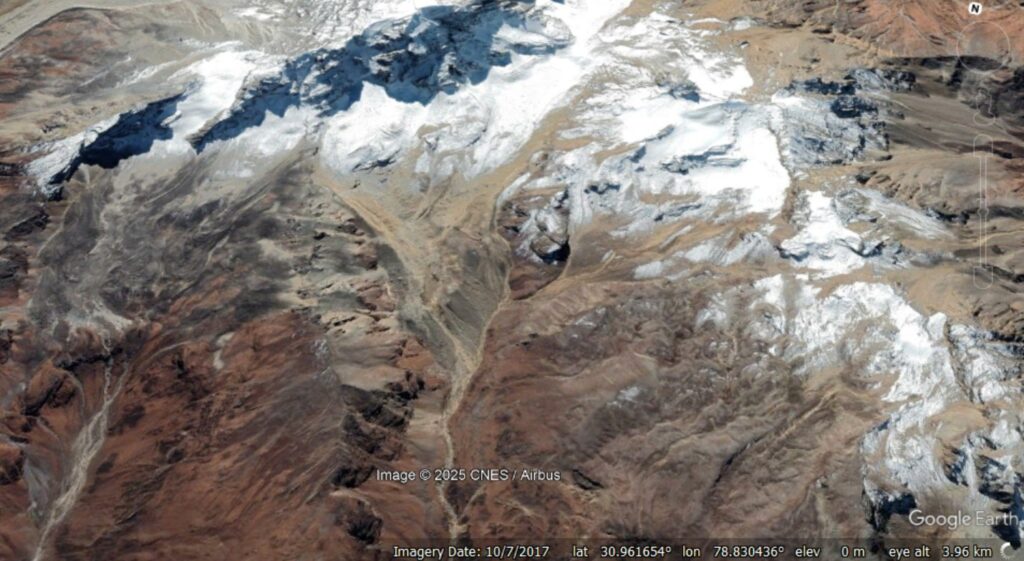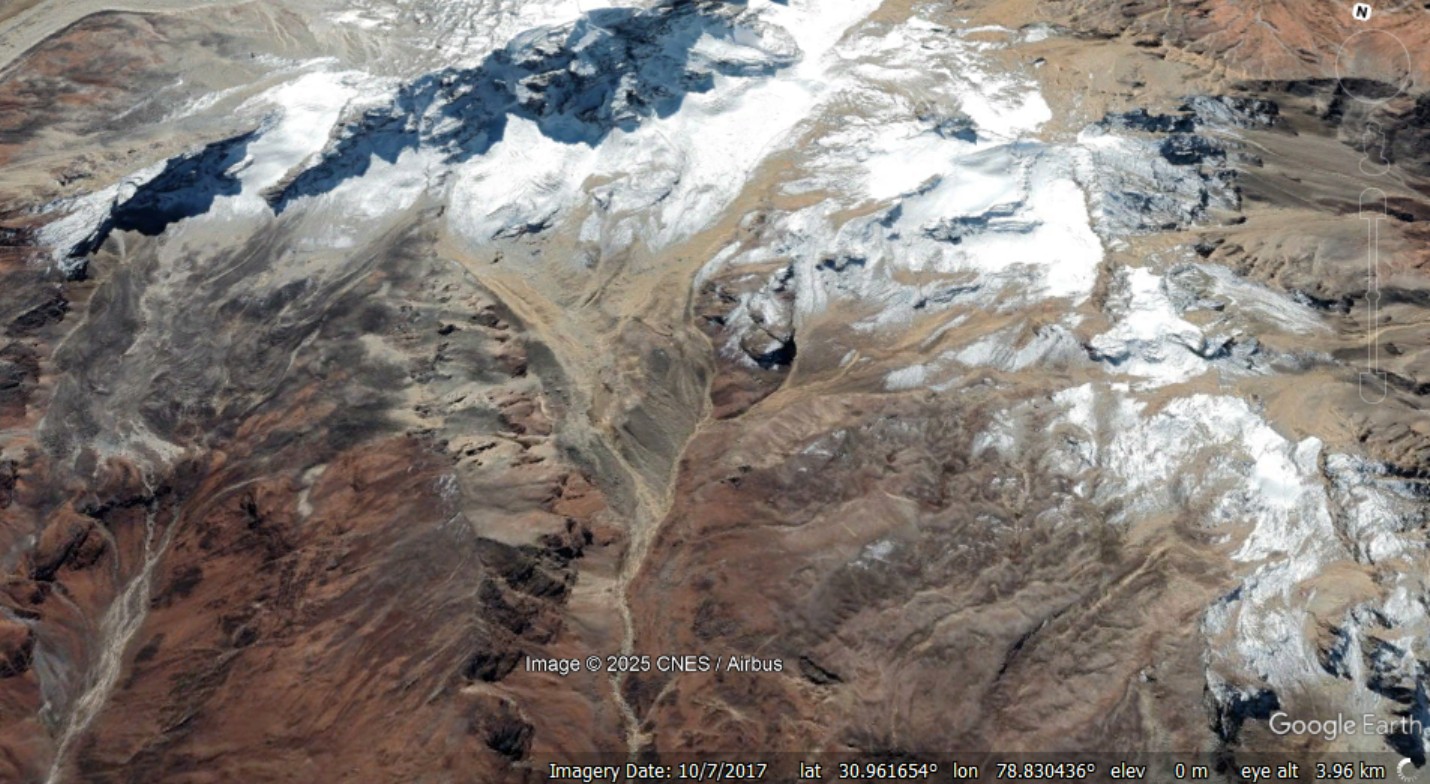A possible cause of the 5 August 2025 landslide is the failure of a large body of glacial material high in the valley above the village.
The imagery that is emerging after the 5 August 2025 debris flow in Dharali (Tharali), in Uttarakhand, northern India make very somber viewing. Melaine Le Roy posted this comparison to BlueSky, which illustrates the scale of the flow that has struck the village:-
Meanwhile, India Today has a good article that describes the current situation, highlighting the challenges that the responders are facing due to ongoing heavy monsoon rainfall and the damage to the road system that provides access to this remote community.
Meanwhile, the attention of the landslide community is now shifting to trying to understand what sits behind this accident. There is already uninformed speculation that it might have been the result of deforestation, and similar disasters in India have led to wild conspiracy theories. Unfortunately, we won’t really know until satellite imagery or drone footage of the valley become available – and the former is very difficult to obtain in the monsoon, when heavy cloud dominates.
On LinkedIn, Imran Khan of the Geology Division at PHPA-I Bhutan has posted an interesting theory.
Imran has identified this body of glacial material sitting high up in the valley:-

This large body of material is located at [30.9799, 78.7965]. Imran’s analysis is that this has a volume of about 360 million m3 (although only a small fraction of this is likely to have moved). It is vast – up to 300 m thick. Imran hypothesises that this mass might have failed to generate the debris flow.
It is interesting to note that there is a video of a second debris flow at Tharali:-
This might support the idea of retrogressive failure of the glacial deposit.
Certainly the deposit in the post-failure images is consistent with this mass, and the volume is sufficient, so this theory is credible. It would have some similarities with the 2013 Kedarnath disaster, also in Uttarakhand.
But other explanations are possible too. One hint might be the low flow in the river before the arrival of the debris flow. Could this hint at a valley blocking landslide that collapsed? Perhaps the glacial material slipped to block the valley, and the dam then failed?
Whatever proves to be the origin of this particular event, the rapidly growing peril associated with high intensity cloudburst events is the underlying story that should be the long term focus. The hazard to many, many mountain villages around the world is a very real worry. In another context, the BBC has a good article about this threat in the Alps. However, the issues are much more serious in the Himalayas (and elsewhere).
It is worth noting that this is not the only very large-scale debris flow in Uttarakhand in recent days. For example, there is video of another event:-
In continued heavy rainfall, one cannot preclude further failures in the valley above Tharali. Ensuring the safety of the rescue personnel in light of this threat is going to be paramount, but will inevitably have an impact on the likelihood of recovering the victims.




